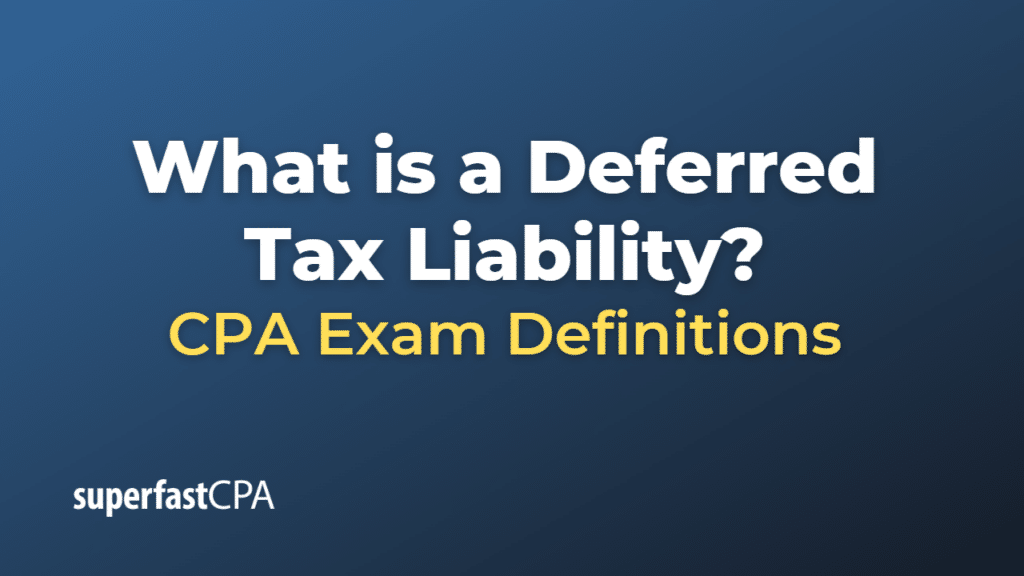Deferred Tax Liability
A deferred tax liability is a tax that a business owes but is not due to be paid until a future date. It’s the amount of taxes a company will pay in future periods due to temporary differences between the tax and financial accounting methods of asset and liability valuation.
Deferred tax liabilities can arise due to differences in depreciation methods, when a company uses an accelerated depreciation method for tax purposes but a straight-line method for financial reporting. This results in larger deductions for depreciation in the early years of an asset’s life for tax purposes than for financial reporting purposes, creating a deferred tax liability for the future tax due when these differences reverse.
Example of a Deferred Tax Liability
Suppose a company purchases an equipment for $100,000. It uses the straight-line method of depreciation for financial reporting purposes, which means it will recognize a depreciation expense of $10,000 each year for 10 years (assuming no salvage value).
However, for tax purposes, the company uses an accelerated depreciation method. This allows it to deduct $20,000 in the first year, $18,000 in the second year, and so on.
In the first year, the company would report a depreciation expense of $10,000 on its income statement, but it would deduct $20,000 as a depreciation expense on its tax return. This results in a temporary difference of $10,000 ($20,000 – $10,000).
Assuming a tax rate of 30%, this temporary difference would create a deferred tax liability of $3,000 ($10,000 * 30%) on the company’s balance sheet. This is because the company saved $3,000 on its tax bill in the current year that will need to be paid in the future when the financial reporting depreciation exceeds the tax depreciation.
In the second year, the financial reporting depreciation would still be $10,000, but the tax depreciation would be $18,000, leading to a temporary difference of $8,000 ($18,000 – $10,000). This would add another $2,400 ($8,000 * 30%) to the deferred tax liability, bringing the total to $5,400 ($3,000 + $2,400).
This process would continue for each year of the asset’s life. Each year, the company would recognize a deferred tax liability for the tax that will be owed in the future when the financial reporting depreciation exceeds the tax depreciation.
By the end of the equipment’s useful life, the total depreciation recognized for financial reporting purposes and tax purposes would be the same, and the deferred tax liability would be reduced to zero as the temporary differences reverse.
Remember, this is a simplified example and the actual calculation of deferred tax liabilities can be more complex and depends on a variety of factors.












